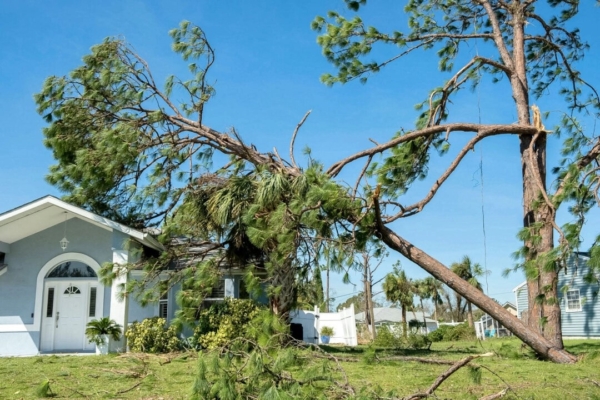If there are large trees around your home, you may often worry about one falling onto your house. Tree falls are a dangerous risk caused by underestimated weather conditions. It is well known that decaying trees can also fall on their own.
Dealing with fallen trees, your first consideration should be safety. After a tree falls, most people will contact their insurance company to see if they are eligible for compensation. Insurance companies may not necessarily compensate for property damage caused by fallen trees.
When you call your insurance company and they ask if you are safe, the first question you will be asked is the reason why the tree fell.
This question and answer are crucial as it will determine whether the insurance company will cover it.
Typically, insurance covers tree damage caused by the following reasons:
– Ice and snow
– Storms
– Strong winds
– Hail
– Fires caused by lightning
Tree falls due to floods or earthquakes are not covered under home insurance, which is reasonable because home insurance does not cover damage caused to homes by these disasters.
Surprisingly, some people find out only when they call their insurance agent that insurance usually does not compensate for tree falls or partial breaks caused by dead trees or trees that are too old.
If a tree falls on your house due to aging and rotting, the losses are usually your responsibility and are generally not covered by the policy because the cause of the fall is considered negligence or maintenance-related issues.
Insurance also does not cover the cost of removing diseased or hazardous trees from your yard. As a homeowner, this is your responsibility. The best approach is to prune trees and remove old or diseased ones.
If a neighbor’s tree falls on my house, will the neighbor or their insurance company compensate for the loss?
Courts do not always hold the owner of the tree responsible for the damage caused by the tree. However, if the tree owner was aware in advance that a dead tree might fall on someone else’s property or house, the situation may change.
Homeowners are responsible for protecting their property. While homeowners cannot go into a neighbor’s yard to cut down trees, they are responsible for informing the tree owner of dead or decaying trees that may fall. Keeping a record of such notifications, sending registered letters, or retaining emails between both parties is usually effective.
If a rotten, old, or diseased tree falls on your house, your neighbor should be held responsible for the situation. If a healthy tree is blown onto your house in a storm, you need to file a claim with your insurance company. The same applies if your tree falls on your neighbor’s house.
If a tree falls and hits a covered building like a house, garage, or fence, the insurance company will pay for the removal costs.
However, if a tree falls without hitting a covered building, home insurance usually does not cover the cost of removing the tree, unless the tree blocks your driveway.
Check your policy for any coverage restrictions, as well as specific deductibles for debris removal.
Home insurance usually does not cover the cost of cutting down trees for prevention or maintenance purposes. While maintaining trees properly is your responsibility, taking care of them and preventing issues is essential.
Home insurance policies typically have deductibles, meaning you need to pay a certain amount before the insurance covers the loss. Deductible amounts usually range from $500 to $2,000. However, not all deductibles are fixed; some are calculated based on a percentage of your home insurance value, typically ranging from 1% to 2%.
For example, if your house is insured for $300,000 with a 2% deductible, you would be responsible for $6,000.
Several factors determine the amount your insurance company may pay. One of them is the type of property damage incurred. If hazards covered by your insurance result in significant damage to your house, you may receive the maximum limit for home insurance.
You can also file claims for damaged personal items up to the specified limits.
If your home becomes uninhabitable, some home insurance policies include additional living expenses such as hotel or meal costs.
Home insurance typically does not cover tree damage to vehicles; this falls under comprehensive vehicle insurance. If your car only has liability or collision coverage, and a tree falls on it, you may not be covered.
If you have trees on your property, check them for any issues, and encourage your neighbors to do the same. If your area is prone to various types of storms, take action to reduce the risks of potential problems.
Ensure you have adequate insurance for your car, especially if there are many trees in your or your neighbor’s yards.
—
This article provides valuable insights on the implications of fallen trees and the associated insurance considerations. It emphasizes the importance of taking proactive measures to address tree-related risks and highlights the responsibilities of homeowners in protecting their properties.

